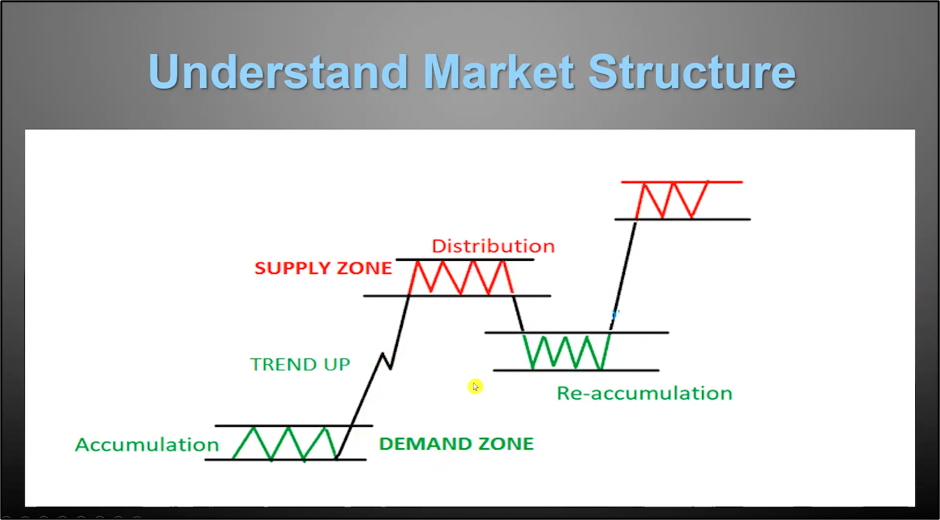Trading market structure: Develop a winning futures trading strategy
January 31st, 2024
Having a sustainable market strategy is integral to becoming a consistently successful trader. However, a trader can’t develop a winning market strategy if they don’t properly understand the trading market structure.
In the recent webinar, “How to Trade Choppy Trading Session Effectively,” BuySide Global’s Mark Conlon explained how trading markets don’t move in a straight line and discussed the nuances of how market trends contribute to understanding market structure.
“If you understand market structure and how it moves—whether it’s chopping or trending—and understand what causes it and how the movement works [then you can become a consistent trader],” Conlon said.
Markets don’t move linearly, as shown in this diagram shared in Conlon’s presentation:

Market movement in trading market structure
Everyone knows the market trends up and down, but here’s some additional terminology to know for futures trading:
- Consolidation is known as “chopping” or “compression”
- Accumulation and distribution areas are consolidation
Accumulation and distribution represent choppy sessions when the price moves sideways and becomes rangebound. Every day, the market goes through phases of consolidation—some tight, some wider. Whether accumulating or distributing, both are considered consolidations.
Accumulations occur when traders are building positions, buying more at lower prices until sellers run out and causing the price to trend up. Then, additional traders buy in, causing a burst to move up to another level—so one level of compression begets another. The market spends more time in compression and consolidation than it does trending, Conlon asserts.
At some point, buyers stop buying and run out of sellers, and then the market moves up to the distribution area. Sellers come in and start selling when they’ve had 20 or 30 ticks. After selling occurs, you get the “chop,” and that’s when the fight begins. That’s when you can lean on your indicators to help you see which direction the market is trending, so you can stay out of false breakouts and eventually identify the real breakout. That’s when you pounce.
View the full webinar for more details on trading market structure.
Interested in more futures trading tips?
Enter Email for Updates